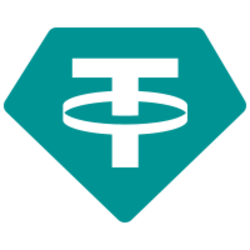When people think of government work, “fast” isn’t usually the first word that comes to mind. We picture forms, long lines, slow approvals, and outdated systems that haven’t changed much in decades. But something interesting is starting to happen. Artificial intelligence, and more specifically tools like ChatGPT, are quietly making their way into the public sector. And as it turns out, they’re doing more than just answering questions. They’re helping governments work smarter, faster, and with a fresh level of efficiency that’s catching people by surprise.
Governments around the world are exploring how AI tools can support public services, policy research, communication, and internal workflows. And in many cases, these tools are already proving their worth. Whether it’s speeding up paperwork, writing faster reports, supporting multilingual communication, or assisting citizens through virtual chat, ChatGPT is starting to show that it can be a valuable ally in modern governance.
How Governments Are Using ChatGPT Today
One of the most immediate uses of ChatGPT in government settings has been in communication. Public service agencies are using AI to help draft clear and friendly responses to emails, requests, and reports. Instead of spending hours going through standard replies or starting every memo from scratch, employees are saving time by using AI-generated drafts that can then be quickly edited and personalized. This is especially helpful when agencies are dealing with high volumes of public inquiries and need to respond quickly and professionally.
In some cities, virtual assistants powered by ChatGPT-like models are being integrated into public websites to help citizens find information faster. Whether it’s about renewing a license, accessing health services, or understanding tax policies, these non gamstop casinos and AI tools are making self-service more efficient for citizens while reducing the workload on human staff.
In the back offices of government departments, AI is also helping with things like document summarization, policy drafting, data analysis, and translation. These are often time-consuming tasks that require accuracy, but not necessarily creativity or personal judgment. ChatGPT is well suited to support these areas by generating high-quality content or summaries in a fraction of the time.
Real Data from Pilot Programs
Several pilot programs have already provided promising results. In Estonia, one of the world’s most digitally advanced governments, AI tools are being used to support service delivery across multiple departments. Some processes that previously took hours to complete can now be drafted within minutes using AI assistance. In the United States, several local government offices have reported noticeable time savings when using generative AI tools to assist with grant writing and internal communication.
In Canada, public servants have used AI to help create policy briefs by summarizing large volumes of public feedback. Instead of combing through thousands of comments manually, AI tools help identify key themes, allowing teams to respond faster and more effectively. In Singapore, where digital innovation in government is highly prioritized, AI tools are being tested to enhance strategic planning by providing rapid insights based on available data and reports.
These examples all point to the same conclusion: when used thoughtfully, ChatGPT can significantly reduce time spent on routine tasks, allowing skilled employees to focus on the parts of their jobs that require human expertise, creativity, and judgment.
AI as a Time-Saving Partner, Not a Replacement
One of the best things about the way governments are using ChatGPT is the balance they’re striking. It’s not about replacing people—it’s about making their jobs easier. For most public employees, time is always limited. Deadlines are tight, and workloads are high. By offloading repetitive writing, formatting, or data-cleaning tasks to AI, professionals can shift their attention to work that truly benefits from their personal insight.
For example, instead of spending half a day writing a routine update report, a manager can get a solid AI-generated draft in a few minutes and then use the rest of the time to refine the message, add context, or focus on team planning. In communications roles, staff can use ChatGPT to suggest clear language for public announcements, especially when explaining complex policies to the public. This makes government messaging more accessible, which improves trust and transparency.
The time savings are not just about speed, but also about energy. When employees spend less time doing repetitive work, they have more mental energy to think creatively, make better decisions, and explore new solutions to persistent challenges. In this way, ChatGPT is acting like a smart assistant—always ready to help, always ready to make the job lighter.
Multilingual Support and Greater Accessibility
In countries where government services are provided in multiple languages, ChatGPT is proving to be an especially helpful tool. Translation takes time, and clear communication in different languages is essential for public trust. AI tools trained on diverse datasets can offer fast, consistent translations or multilingual summaries that help agencies respond to citizens more inclusively.
This also extends to accessibility. Governments are experimenting with using ChatGPT to help rewrite official documents in plain language. That means turning complicated legal or policy terms into easy-to-understand text that citizens from all backgrounds can understand. When people can access and understand government information more easily, they’re more likely to participate in civic life, comply with regulations, and trust public institutions.
Empowering Small Teams with Big Tools
While large national governments may have access to vast resources, smaller local governments often work with limited staff and tight budgets. For these teams, AI can be a game-changer. A small town’s planning department might not have the budget for full-time research staff, but they can use ChatGPT to help review zoning regulations, summarize development proposals, or even brainstorm ideas for public outreach.
This levels the playing field and allows smaller teams to deliver services with the same speed and polish as larger institutions. The flexibility of AI also means that it can be tailored to local needs. With a bit of guidance, ChatGPT can adapt its tone, style, and knowledge base to fit specific regional requirements, making it an even more valuable partner in the process.
Final Thoughts
So, is ChatGPT helping governments work faster? Absolutely. The data from early adopters, pilot projects, and real-world use cases all point to one truth: AI can streamline public service work in ways that were hard to imagine just a few years ago. And the best part is, this isn’t about removing people from the process. It’s about giving them more time, more focus, and more freedom to do the work that truly matters.
(All articles published here are Syndicated/Partnered/Sponsored feed, LatestLY Staff may not have modified or edited the content body. The views and facts appearing in the articles do not reflect the opinions of LatestLY, also LatestLY does not assume any responsibility or liability for the same.)













 Quickly
Quickly




















